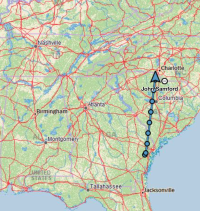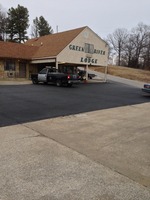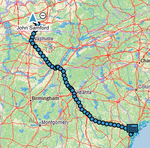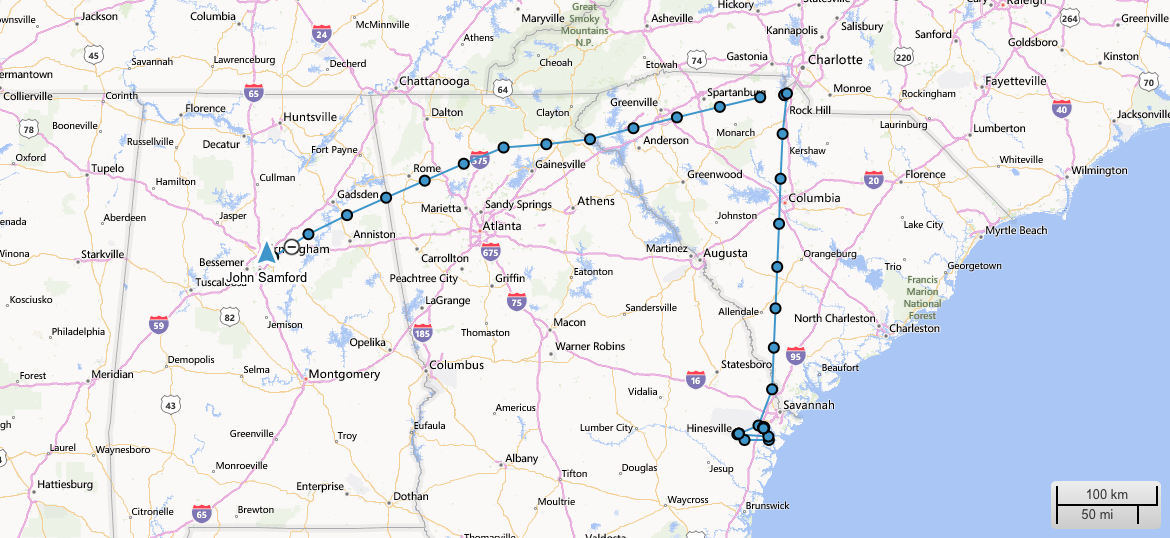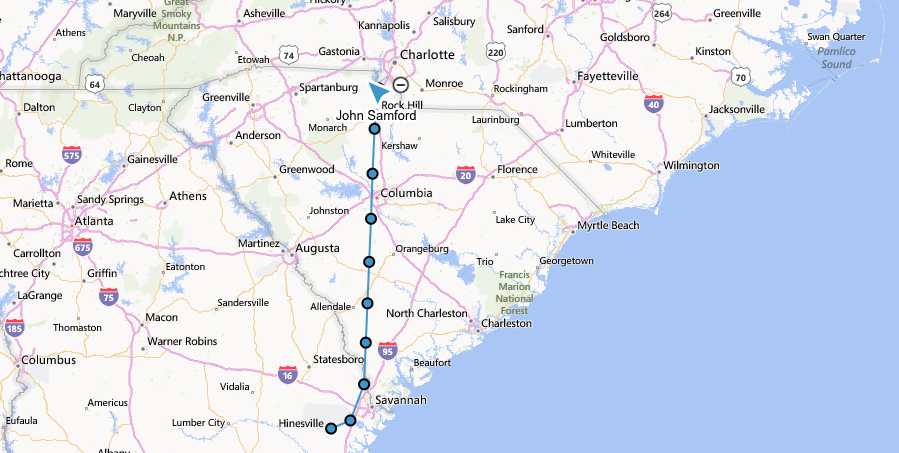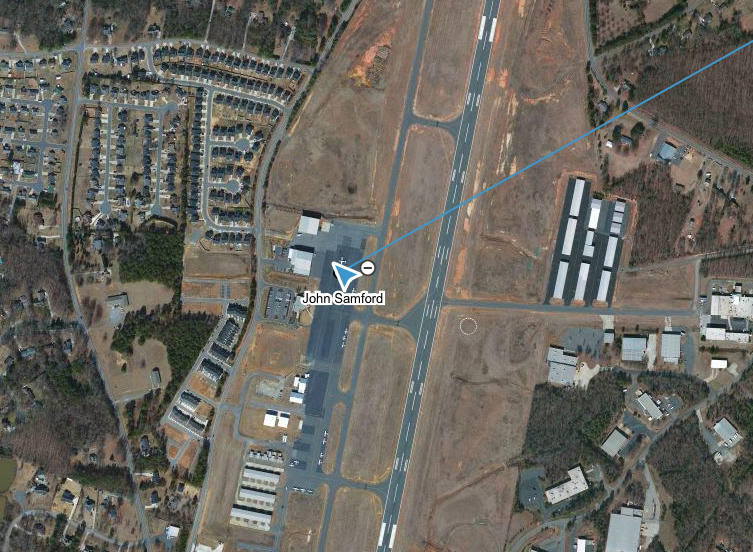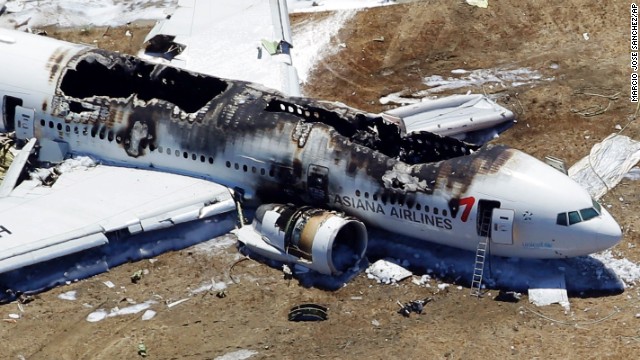Airspeed eroded despite six eyes on the Asiana 777 flight deck.
Complications and distractions aside, over-reliance on automation systems appears to have trumped basic flying skills and crew resource management in the crash of Asiana Airlines Flight 214 at San Francisco International Airport on July 6.
Adding to the confusion are multiple modes for autothrottle systems that link to complex auto-flight and autopilot systems. Autothrottles provide automatic speed or vertical speed control, including stall prevention in some modes, allowing pilots to focus on the other tasks. According to Boeing documentation, the 777’s autopilot has five operating modes.
Mode confusion could have played a role in the Asiana crash -the pilot-in-command of the highly automated 777-200ER expected that the Boeing’s autothrottle system would hold the aircraft’s approach speed to a pre-set value of 137kt. as the aircraft, high on the initial approach, descended to capture a visual or electronic glideslope.
The system did not maintain the speed, leaving the engines at flight idle through the final portions of the approach and placing the aircraft very near an aerodynamic stall less than 200ft. above San Francisco Bay in a high-drag state with landing gear and flaps deployed to 30 degrees before pilots detected the error.
The crew attempted a full-thrust go around, but the call came too late, as the twinjet’s main landing gear and tail clipped a seawall ahead of Runaway 28L 1.5 seconds later. The impact removed the landing gear and the empennage, leaving everything forward of the aft pressure bulkhead to skid and spin uncontrolled on its belly down the runaway. Despite the violent conclusion, the airframe and cabin largely held together, allowing 123 of the 307 passengers and crew on board to walk away unassisted.
While the NTSB’s final analysis will likely take a year or more to complete, preliminary information from the cockpit voice and flight data recorders and pilot interviews indicate that distractions and automation surprises appeared to cause the pilots to lose altitude and airspeed awareness.
“I don’t know how the whole crew could take their eyes off the speed,” a 777 fleet captain for a major carrier tells Aviation Week. “One of the basic tenets of a stabilized approach is speed.”
Internationally accepted guidelines call for air speed and thrust to be stable and the aircraft on the proper glide path by 1000ft. above ground level for an instrument approach and 500ft. for a visual approach. The 777 captain’s airline recommends that pilots have the landing gear down by 2000 ft. altitude and final flaps no lower than 1500 ft. If the approach becomes unstable at any time below the entry altitude, pilots are advised to perform a go-around.
Complicating the arrival for the Asiana crew was an air traffic control request to maintain 180kt. until 5nm from the airport during the final leg of the visual approach, requiring pilots to bleed off 20kt. airspeed before lowering the flaps to 30 degrees. The tower later cleared Flight 214 to land when it was 1.5nm from the runaway. Some carriers allow for pilots to land with 25 degrees flaps, which can be deployed at 185kt. or below.
The left-seat pilot, the “pilot-flying,” was not officially the pilot-in-command as he was roughly midway through the airline’s initial operating experience phase for 777 checkouts. The instructor pilot in the right seat was pilot-in-command, on his first flight as an instructor pilot. He had never flown a 777 into San Francisco. At press time, it was not clear what roles the two front-seat pilots and a relief first officer in the jump seat had set in terms of crew resource management.
Though GPS-based vertical guidance was likely available to replace Runaway 28L’s inoperative instrument landing system glideslope, the Asiana crew may have elected to fly a visual approach using the four-light precision approach path indicator (PAPI) located near the touchdown point on the runway. When centered in the PAPI’s 2.85-deg. glideslope, pilots will see two white and two red lights. All red indicates a position significantly below the glideslope, while all white lights indicates one well above the references glideslope.
The instructor pilot told investigators that at 500 ft. altitude, he realized the aircraft was below the PAPI’s visual glideslope and told the left seat pilot to “pull back” on the control yoke. “He had set the speed at 137kt. and assumed the autothrottles were maintaining the speed,” the NTSB says. Depending on the auto-flight mode selected, autothrottles, if armed and turned on, should automatically control engine thrust to maintain a pre-set speed in this case 137kt., the reference landing speed for the 777-200ER that day.
There are caveats, however. In the takeoff/go-around flight-level change (FLCH) auto-flight modes, the autothrottle will not automatically activate to maintain the selected speed. FLCH is pitch mode used to climb or descend at a constant airspeed using the elevator for pitch control. There are also “mode surprises,” certain conditions in which modes will transition without the pilot’s knowledge, potentially putting the automation into a mode like FLCH without the pilot’s knowledge.
By late week, The NTSB had not said whether the pilots had purposefully or mistakenly entered a mode that inhibited the autothrottles, or if the autothrottle system failed. During interviews, the instructor pilot told officials the aircraft was “slightly high” when it descended through 4000ft on the approach and he set the auto-flight system’s vertical speed mode for a 1,500ft./min descent rate. NTSB chairman Deborah Hersman said July 10 that during the final 2.5 min. of flight, the flight data recorder shows transition to “multiple autopilot modes and multiple autothrottle modes.” “We need to understand what those modes were, if they were commanded by pilots, commanded inadvertently, and if the pilots understood what the mode was doing,” he says.
Source: AW & ST July 15, 2013
 Monday, May 25, 2015 at 02:11AM
Monday, May 25, 2015 at 02:11AM 


